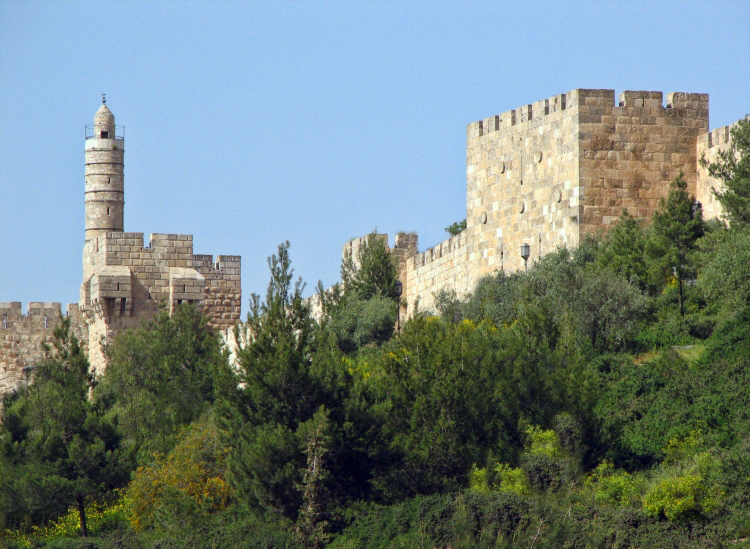
Pictures from Jerusalem, Suite for Orchestra
From the Top of Mount Scopus – David’s Tower – An Oriental Suburb – The Wailing Wall – The Market – From the Top of Mount Scopus
Recording of the first performance of the composition, around the year 1960:
Mendy Rodan, Conductor
The Kol Israel Symphony Orchestra (The Broadcasting Service Orchestra)
Note: Part III, An Oriental Suburb, is missing from this recording.
Publisher: The Marc Lavry Heritage Society
Synopsis:
In six short movements Pictures from Jerusalem describes highlights of the holy city, also the capital of Israel. The composition both opens and closes with movements about Mount Scopus, a vantage point from which the entire city of Jerusalem can be viewed.
- From the Top of Mount Scopus (Adagio): the melodic harp and lyric violin convey the serenity and beauty of the city as seen from the mountaintop.
- David’s Tower (Allegro Vivo): A blast of the brass section opens this movement, illustrating the majestic spire rising over the Old City’s wall.
- An Oriental Suburb (Andantino): A delicate rhythmical dance divided into two by a free, non-rhythmical cadenza, played by solo flute, English horn, maracas, percussion and violin.
- The Wailing Wall (Andante Maestoso): A percussion roll followed by the horns introduces the awesome wall. An intimate prayer is then heard through melodies of Jewish essence by solo instrument, that crescendos into a huge cry by the entire orchestra. The movement ends with a soft murmur.
- The Market (Vivace): A vibrant movement of the commotion of the souk and the shouts of the vendors announcing their goods.
- From the Top of Mount Scopus (Adagio): The suite ends with the same serenity it opened with, where Lavry shares his admiration for his hometown, Jerusalem.
It’s important to note that Marc Lavry wrote this composition 7 years before Jerusalem was united. Despite never seeing the reunification of Jerusalem (he died less than 3 months before that), the composer was compelled to express his connection to the city as a whole that, to him, was the quintessence of the Jewish story.
The composition won first prize in a content by Acum (ASCAP), Israel’s Music and Literary Rights Society.
Anecdote: Lavry was always in awe of Jerusalem and was humbled by the uniqueness of the city and its history. Throughout the years he wrote three symphonic compositions about the city.
In 1936 he wrote Symphonic Poem Jerusalem – I, Op. 43
In 1953 he wrote Symphonic Poem Jerusalem – II, Op. 249.
In 1960 he wrote the suite for orchestra Pictures from Jerusalem, Op. 293.




